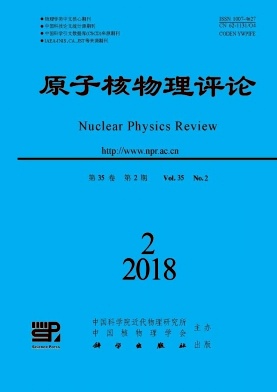|
[1]
|
BETHE H A. Rev Mod Phys, 1990, 62:801. |
|
[2]
|
GLENDENNING N K. Compact stars:Nuclear Physics, Particle Ph and General Relativity[M]. New York:Springer:1997:206. |
|
[3]
|
DEMOREST P B, PENNUCCI T, RANSOM S M, et al. Nature, 2010, 467:1081. |
|
[4]
|
ANTONIADIS J, WHELAN D G. Science, 2013, 340(6131):448. |
|
[5]
|
LI T P, XIONG S L, ZHANG S N, et al. Science China Physics Mechanics & Astronomy, 2018, 61:031011. |
|
[6]
|
ABBOTT B P, et al. Phys Rev Lett, 2017, 119:161101. |
|
[7]
|
JIANG W Z, LI B A, CHEN L W. Astrophys J, 2012, 756:56. |
|
[8]
|
HARTLE J B. Astrophysics & Space Science, 1973, 24:385. |
|
[9]
|
FATTOYEV F J, PIEKAREWICZ J. Phys Rev C, 2010, 82:025810. |
|
[10]
|
HONG B, JIA H Y, MU X L, et al. Chin Phys C, 2016, 40:35. |
|
[11]
|
ZHAO X F, JIA H Y. Journal of Astrophysics & Astronomy, 2012, 33:303. |
|
[12]
|
DATTA B, RAY A. Monthly Notices of the Royal Astronomical Society, 1983, 204:75. |
|
[13]
|
ZHAO Xianfeng, WANG Shunjing, ZHANG Hua, et al. Journal of Sichuan University(Natural Science Edition), 2009, 46(3):743. (in Chinese) (赵先锋, 王顺金, 张华, 等. 四川大学学报:自然科学版, 2009, 46(3):743.) |
|
[14]
|
ZHAO Xianfeng, WANG Shunjing, ZHANG Hua, et al. Journal of Southwest University(Natural Science Edition), 2010, 32(7):46. (in Chinese) (赵先锋, 王顺金, 张华, 等. 西南大学学报(自然科学版), 2010, 32(7):46.) |
|
[15]
|
ZHAO Xianfeng. Acta Astronomic Sinica, 2011, 52(2):126. (in Chinese) (赵先锋. 天文学报, 2011, 52(2):126.) |
|
[16]
|
HEWISH A, OKOYE S E. Nature, 1964, 203:171 |
|
[17]
|
GLENDENNING N K, MOSZKOWSKI S A. Phys Rev Lett, 1991, 67:2414. |
|
[18]
|
SCHAFFNER J, MISHUSTIN I N. Phys Rev C, 1996, 53:1416. |
|
[19]
|
SCHAFFNER J, DOVER C B, GAL A, et al. Annals Phys, 1994, 235:35. |
|
[20]
|
YANG F. SHEN H. Phys Rev C, 2008, 77:025801. |
|
[21]
|
PACINI F. Nature, 1968, 219:45. |






 甘公网安备 62010202000723号
甘公网安备 62010202000723号 DownLoad:
DownLoad: